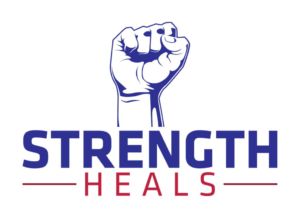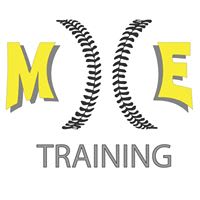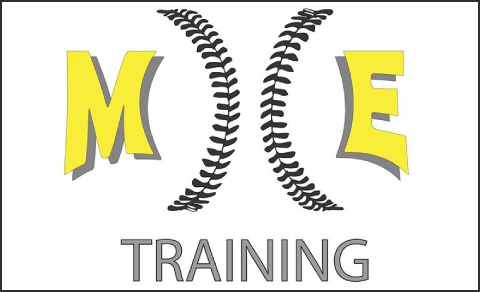WEIGHTED BASEBALLS: DO’s and DON’T’s BASED ON THE RESEARCH
Jarad Vollkommer, CSCS
Assistant Director of Training, Infiniti Sports Performance
Oh boy, here we go again with all the weighted baseball stuff…
But, seriously, are you educated yet? Probably not. There is so much more research needed to fully understand everything there is about weighted baseballs.
So far, here is some of what we do know in a quick summary:

Throwing Velocity
Using an array of weighted baseballs (4-12oz.) can lead to an increase in throwing velocity, we know that.
One study [1] found that using over-weighted baseballs as a warm up greatly improved both throwing velocity and accuracy.
These results are great, but they lack ecological validity (carry-over effect). Will a pitcher ever warm-up with a non-regulation ball between innings? Probably not.
It seems that the most optimal range for progressively increasing intensity is 4-6 ounces. In a multitude of studies by Coop DeRenne [4-5], increasing by 0.25 ounces per week has shown to increase throwing velocity by 6%.
If you plan on implementing a weighted baseball program, the suggested ratio of weighted (over- and under-weighted) baseballs to regulation baseballs is 2:1 [6]. For example, 10 throws with a regulation ball will yield 20 throws with an over- and under-weighted baseball.
Heavier baseballs increase the amount of external rotation of the throwing arm in the arm cocking position, as well as the amount of internal rotation force on the throwing shoulder [2]. External rotation has been linked to an increase in throwing velocity.
Baseballs that are significantly greater (14-oz.) than regulation baseballs (5-oz.) should NOT be used for enhancing throwing mechanics or arm strength. Increasing arm strength can only occur in the weight room!

Arm Stress
Under-loaded (less than 5-oz.) baseballs produce great arm velocities, but also create the greatest amount of arm stress [2]. Although this may seem negative, some low-load stress is needed to create an adaptation.
As weighted baseball mass increases, the amount of elbow and shoulder joint torques decrease, as well as ball velocity [2].
In Mike Reinold and ASMI’s study, they found that arm strength and arm speed did NOT go up. What did go up was total range of motion in the throwing shoulder. Interesting, huh? Now we know that the amount of rotation your shoulder gets is correlated with throwing velocity.
So far, here is what we DO NOT know:
Throwing Volume
Most of us think that if some is good, then more must be even better. As we know, this is not always the case. There is always a minimal effect dose that needs to be considered, and not just with throwing weighted baseballs.
For example, we have a general idea on how many throws, how many days per week, and when during the competitive year are effective in increasing throwing velocity, but nothing set in stone with research.
Rather than doing too much at once and finding out when you’ll get hurt, SLOWLY ramp up. Like everyone having a maximal-recoverable volume from resistance training, the same applies to throwing a baseball (and a weighted one as well).
A stress response is needed for a positive adaptation to occur. Like resistance training, the body needs progressive overload to see increases in strength and muscle growth.
Like throwing, stress on the arm is needed for a positive adaptation to occur. But, keep in mind, everyone has a specific maximal recoverable volume.
Future research is also needed to understand the long-lasting effects that weighted baseballs have on throwing velocity.
![]()
Long-Term Shoulder Health
In some cases, although you have suddenly increased throwing velocity with a weighted baseball, you may be further damaging the capsule of your throwing shoulder.
Rather, the appropriate concept to consider is progression. A rather huge spike in throwing velocity, during the short-term time frame, may be more harmful than beneficial.
If you want to increase the longevity of your throwing arm, DO NOT have a microscopic view of the throwing motion. There are other ways that you can increase throwing velocity without the expense of adding volume to your arm.
To conclude this article, I do think weighted baseballs have merit when implemented correctly. People mistake these programs for replacing their strength and conditioning. If you want to maximize your results, consider this equation:
Arm Fitness + Total Body Training = Velocity
4-Ways to Increase Throwing Velocity (from Mike Reinold)
- Age and Maturity – if you want to throw harder, keep playing. Your throwing velocity will naturally go up once you are physically mature.
- Get stronger – MASS equals GAS. This is both total mass and lean mass. Being able to display a good amount of lower body strength, rotator cuff strength, as well as expressing these variables in a powerful manner, will allow you to throw harder.
- Take care of your arm – RECOVERY is such an undervalued aspect to performance. Maintaining arm strength and endurance will go a long way.
- Throwing mechanics – being able to dissociate your hips from your upper torso develops the elastic sling in your anterior core.

References
- Van Huss WD, Albrecht L, Nelson R, et al. Effect of overload warm-up on the velocity and accuracy of throwing. Res Q 1962; 33 (3): 472-5
- Fleisig, G.S., Diffendaffer, A.Z., Aune, K.T., Ivey, B., and Laughlin, W.A. (2016). Biomechanical analysis of weighted-ball exercises for baseball pitchers.
- Straub, WF. (1968). Effect of overload training procedures upon velocity and accuracy of the overarm throw. Research Quarterly 39(2), 370-9
- DeRenne C, House T. Power baseball. St Paul (MN): West Educational Publishing, 1993
- DeRenne C, Kwok H, Blitzblau A (1990). Effects of weighted implement training on throwing velocity. Journal of Applied Sport Science Research 4(1), 16-19
- Escamilla, R.F., Speer, K.P., Fleisig, G.S., Barrentine, S.W., and Andrews, J.M. (2000). Effects of throwing overweight and underweight baseballs on throwing velocity and accuracy. Journal of Sports Medicine 29(4), 259-272.











